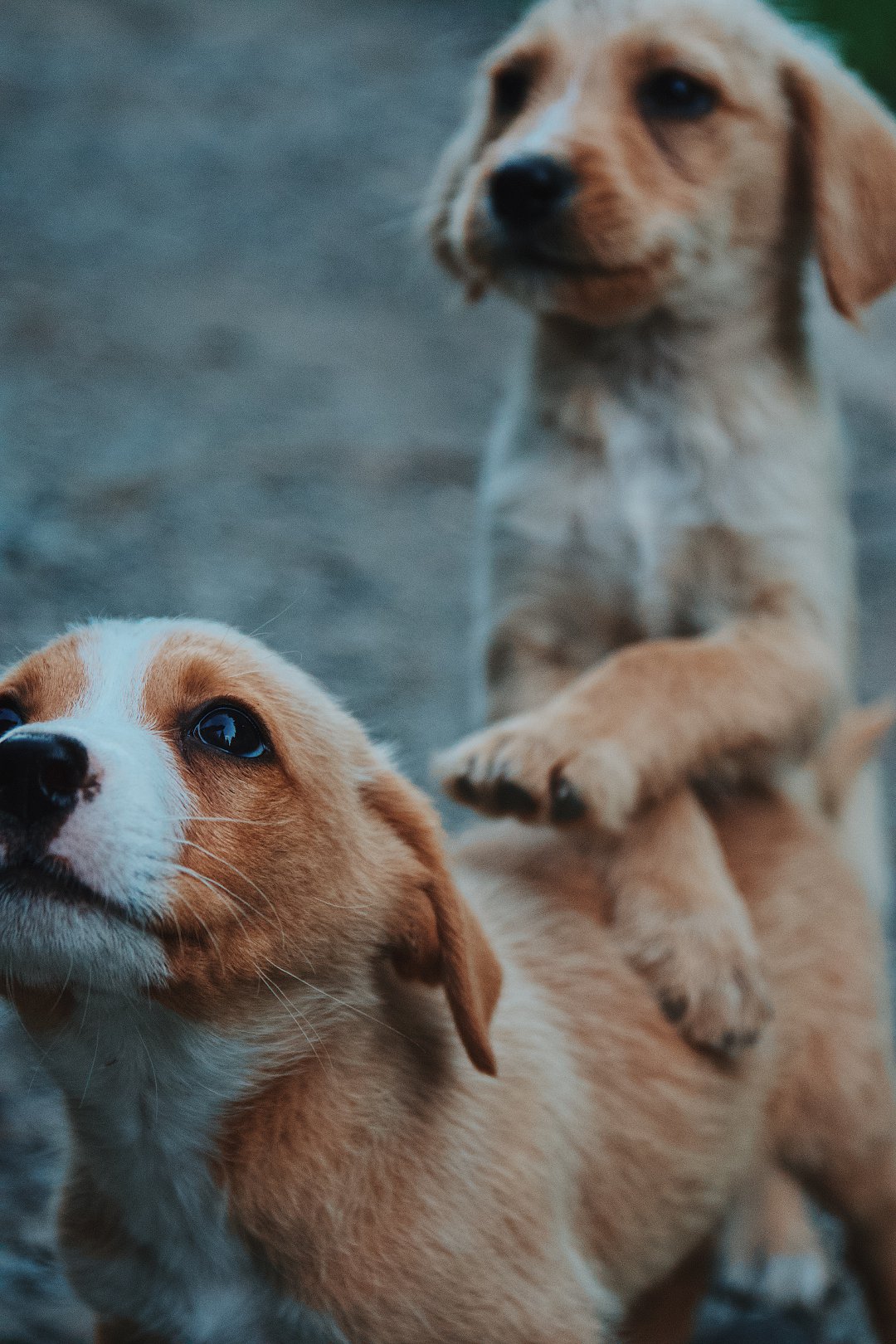Table of Contents
Introduction: Unveiling the Growth Patterns of Beagles: When Does a Beagle Stop Growing?
Are you a proud owner of a beagle puppy? Or perhaps you’re considering bringing one into your family? Either way, understanding the growth patterns of beagles is essential for providing them with the proper care and support they need. One common question that arises is, “When does a beagle stop growing?” Well, the answer to that is not as straightforward as you might think. In this article, we will delve into the stages of beagle growth, from adorable puppies to full-grown dogs. By the end, you’ll have a clear understanding of when your furry friend will reach their full size and be able to anticipate their growth milestones along the way.
Beagle growth is a fascinating journey that goes through several stages. As puppies, beagles experience rapid growth and development, both physically and mentally. During this time, it’s crucial to provide them with a balanced diet and regular exercise to support their growing bodies. As they approach adulthood, their growth rate slows down, and they start to fill out, reaching their full size. However, the exact timeline for when a beagle stops growing can vary from dog to dog. Factors such as genetics, nutrition, and overall health play a role in determining their growth patterns. In the next section, we will explore the different stages of beagle growth in more detail, shedding light on the fascinating transformation from a tiny pup to a fully matured beagle.
Understanding Beagle Growth Stages: From Puppies to Full-Grown Dogs
Beagles are known for their adorable and compact size, but have you ever wondered when does a beagle stop growing? Understanding the growth stages of beagles is important for their overall development and care. Let’s take a closer look at the different growth stages of beagles and when they reach their full size.
1. Puppy Stage
Just like any other dog breed, beagle puppies go through a rapid growth phase during their first few months. They are born small and helpless, weighing around 8 to 10 ounces. By the time they reach the age of 12 weeks, they usually weigh between 10 to 15 pounds. During this stage, their bones and muscles are developing rapidly, and they require proper nutrition and care to support their growth.
2. Adolescence Stage
Beagle puppies enter the adolescence stage around 6 to 12 months of age. This stage is characterized by significant growth spurts and changes in their physical appearance. They start gaining height and their weight increases as well. By the time they reach 6 months, their weight can range from 20 to 25 pounds, and they continue to grow until they reach their full size.
3. Adult Stage
Beagles typically reach their full size and maturity between 1 to 2 years of age. At this stage, they have achieved their maximum height and weight. On average, adult beagles stand around 13 to 15 inches tall at the shoulder and weigh between 20 to 30 pounds. However, it’s important to note that individual beagles may vary in size and some may be smaller or larger than the average.
Beagle growth patterns can also be influenced by factors such as genetics, nutrition, and overall health. It’s essential to provide them with a balanced diet and regular exercise to support their growth and development. Regular check-ups with a veterinarian can help ensure that they are growing at a healthy rate and there are no underlying health issues affecting their growth.
Understanding the growth stages of beagles is crucial for their overall well-being. By knowing when a beagle stops growing, you can provide them with the necessary care and support during each stage of their development. So, if you’re wondering when your beagle will reach their full size, keep in mind that it usually happens between 1 to 2 years of age.
The Journey to Adulthood: When Do Beagles Reach Their Full Size?
As adorable as Beagle puppies are, every dog owner wonders when their furry friend will reach their full size. Understanding the growth patterns of Beagles is essential for proper care and training. So, when does a Beagle stop growing? Let’s delve into this fascinating journey to adulthood.
Beagle Growth Stages
Before we dive into the timeline of Beagle growth, let’s briefly understand the different stages a Beagle goes through:
- Puppy Stage: This stage begins from birth and lasts until around 6 months. During this time, Beagle puppies experience rapid growth and development.
- Adolescence: From around 6 months to 1 year, Beagles enter their adolescent stage. This is when they start experiencing growth spurts and their bodies begin to fill out.
- Adult Stage: Beagles typically reach their full size and maturity between 1 to 2 years of age. However, it’s important to note that individual Beagles may have slight variations in their growth timeline.
Beagle Growth Timeline
The growth timeline of Beagles can vary depending on various factors such as genetics, nutrition, and overall health. However, here’s a general timeline to give you an idea of when you can expect your Beagle to reach their full size:
- Birth to 3 months: During this period, Beagle puppies experience the most rapid growth. They double or even triple their birth weight within a few weeks.
- 3 to 6 months: Beagle puppies continue to grow rapidly but at a slightly slower pace. By 6 months, they would have reached approximately 60-70% of their adult height.
- 6 months to 1 year: Beagles enter their adolescent stage, and growth spurts become more noticeable. They may gain weight and fill out during this period.
- 1 to 2 years: Beagles reach their full size and maturity by this time. While their growth rate slows down, they may still undergo some minor changes in body structure.
Beagle Growth Expectations
It’s important to have realistic expectations when it comes to Beagle growth. While there is a general timeline, individual Beagles may deviate slightly. Some Beagles may reach their full size earlier, while others may take a bit longer. Additionally, factors such as genetics and nutrition play a significant role in determining a Beagle’s growth rate.
By closely monitoring your Beagle’s growth and consulting with your veterinarian, you can ensure they are developing at a healthy pace. Regular check-ups, a balanced diet, and regular exercise are crucial for their overall growth and well-being.
In conclusion, the journey to adulthood for Beagles is an exciting one. Understanding their growth patterns and knowing when they reach their full size allows you to provide the best care and support throughout their development. So, keep an eye on your Beagle’s growth, cherish their puppyhood, and embrace their journey to becoming a fully grown, happy, and healthy companion.
FAQs About: When Does a Beagle Stop Growing
At what age do beagles stop growing?
Beagles typically stop growing between the ages of 12 to 18 months.
How can I track my beagle’s growth progress?
You can track your beagle’s growth progress by using a beagle weight chart. Regularly measure and record your beagle’s weight to monitor their growth.
Are there specific growth stages for beagle puppies?
Yes, beagle puppies go through various growth stages. These stages include the neonatal stage, transitional stage, socialization stage, and juvenile stage.
What is the average size of a full-grown beagle?
On average, a full-grown beagle reaches a height of 13 to 15 inches (33 to 38 cm) and weighs between 20 to 30 pounds (9 to 14 kg).
When do beagles experience growth spurts?
Beagles experience growth spurts during their juvenile stage, which is usually between 3 to 6 months of age. During this time, they may have increased appetite and show rapid physical growth.
Do beagles have growth plates?
Yes, beagles, like other dog breeds, have growth plates. These growth plates are areas of developing cartilage that contribute to the dog’s bone growth. It’s important to avoid excessive exercise during their growth period to prevent injury to these plates.






Leave a Reply